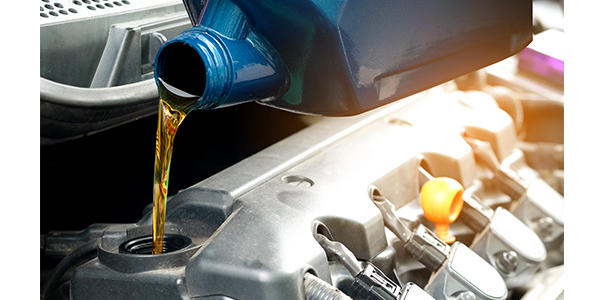
In the “good ol’ days,” oil came in cans, not plastic bottles. The oil back then was made from a Group I refined crude oil with a handful of anti-wear additives and detergents to keep the engine clean. If the engine made too much noise, you added heavier-weight oil. It was simple, and the cars were too. But, you also had to change the viscosity for winter and summer driving.
Today’s oils are multi-grade for all seasons and far more complex. They are often blended to meet the needs of a specific manufacturer, or even a specific engine, in some cases in accordance with the American Petroleum Institute (API). Downsized, turbocharged engines with direct injection have added another wrinkle to the lubrication equation because of the carbon buildup issues and the low-speed pre-ignition (LSPI) they tend to develop.
It has been said that making oil is like baking a cake. Everyone uses the same basic ingredients like water and flour, but the spices and frosting give it a distinct taste. Without the spices, the cake would be very bland. With oil, it’s a similar story. The additives are what add the characteristics to the base oil that may or may not be desirable for a particular vehicle. But, the base oil is what determines if the oil is considered synthetic or conventional oil. While today’s vehicles are requiring more synthetic oils that are more refined, in the past, most motor oil was made from lower grade base oils.
According to API, base oils can be broken down into five main groups based on the refining method and lubricant’s properties, such as viscosity and the proportion of saturates and sulfur content. Before all the additives are dropped in, engine oils begin as one or more of these five API groups.
Group I
Oils made from this base oil are the least refined type, which is made from a solvent refining process. Oil in this category usually consists of conventional petroleum base oils. API defines Group I as base stocks that contain less than 90 percent saturates and/or more than 0.03 percent sulfur and have a viscosity index (VI) more than or equal to 80 and less than 120.
VI measures the change of viscosity with temperature, which has been effective for predicting the behavior of lubricating oils for automotive uses. The lower the VI, the more the viscosity is affected by changes in temperature. When it was first introduced, the VI scale only went from 0 to 100. But science has advanced since then, and now oils are being developed with much higher VIs.
Group II
API defines Group II as base stocks that contain greater than or equal to 90 percent saturates and less than or equal to 0.03 percent sulfur and have a viscosity index greater than or equal to 80 and less than 120. Group II offers a better grade of base oil because it is partially produced through the process of hydrocracking where the impurities are removed. Group I and II are considered conventional oils because there is not as much refining and higher levels of impurities are still present.
Group III
API defines Group III as base stocks that contain greater than or equal to 90 percent saturates and less than or equal to 0.03 percent sulfur and have a viscosity index greater than or equal to 120. This group may be described as synthetic, or in more exact terms, hydrocracked synthetic oil. There has been a good deal of debate and legal issues over whether oils made with this base oil are full synthetic. So some oil companies may call their products under this group synthetic oil. But remember, the base oil is only part of the equation. The additives make up a larger percentage of the performance.
Group IV
This group consists of synthetic oils made of Poly-alpha-olefins (PAO). Motor oils made from this group are considered full synthetic. PAO oils are considered more stable in extreme temperatures and are suited for a wide range of temperatures from very cold weather to very hot weather.
Group V
Group V is really any base oil that doesn’t fit into the previous groups. They include, among others, naphthenic oils and esters. Some automotive oils may include Group V base oils but, generally, each brand keeps its ingredients a well-guarded secret.
Products made with PAOs find many uses as automotive lubricants including synthetic gear oils, hydraulic fluids, greases, engine oils and others. PAOs have many advantages over conventional mineral oils, including better oxidative and thermal stability, excellent low-temperature properties and a higher viscosity index.
Bottom line is that synthetic oil is still made from petroleum crude oil, but a more refined crude. Remember, though, it is not all about the base stock. Additives have a big role to play and can shape the characteristics for specific applications. But, that is a discussion for another time. The move to more synthetic-based oils is ongoing as emissions requirements and technology is continually developed. Many of the oils today have additives that are designed to be compatible with modern emissions systems. We are long past the stage of pouring cans of single-weight oil. As the oils get thinner, more importance is placed on the base oil and additives to keep parts lubricated, cool and pumped up so that the engine can work at its peak.













